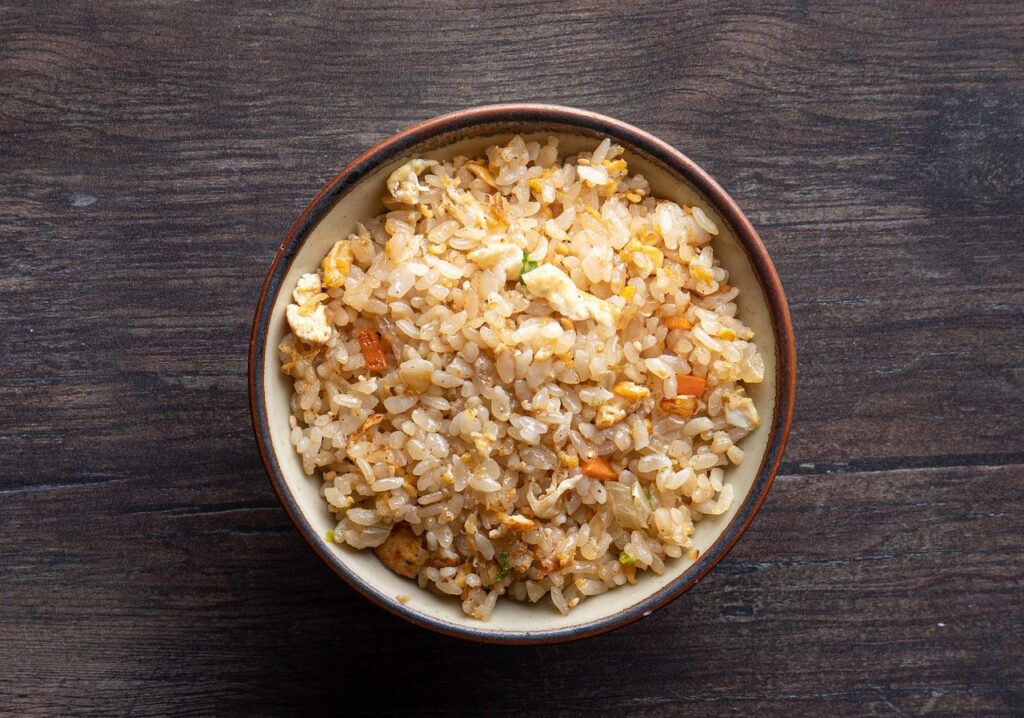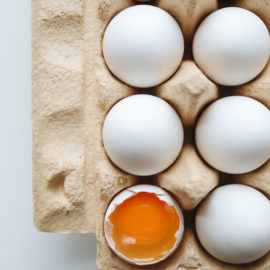
Have you ever tried cooking fried rice using freshly cooked rice? How was the texture, though? If it turned out soggy, that’s because of its excess moisture. The next time you cook rice, try to let the rice age a little. Nothing beats leftover rice, especially one-day-old rice, when making fried rice. And here’s why.
Rice primarily consists of starch molecules. Starch is a complex carbohydrate composed of amylose and amylopectin polysaccharide. Amylose represents a linear and relatively unbranched glucose chain in starch, connected by alpha-1,4-glycosidic bonds. This contributes to a denser, firmer texture in starchy foods. In contrast, amylopectin forms a highly branched glucose chain with alpha-1,6-glycosidic bonds, resulting in a more porous and granular structure that imparts a sticky, creamy texture to starchy foods.
ONE-DAY-OLD RICE RESISTANT STARCH FRIES BETTER
When the rice is mixed with water and subjected to heat, the starch granules expand as water infiltrates its core. Gradually, the granule absorbs a sufficient amount of water and swells to an extent where it disintegrates into a matrix of starch molecules combined with water.
When the cooked rice is refrigerated, the starch molecules gradually undergo a reformation process called retrogradation. In food chemistry, retrogradation refers to the phenomenon in which starch returns or reverts to a crystalline structure as it cools down. The result of retrogradation is the formation of resistant starch. This is the same reason why bread in the refrigerator hardens over time.
Resistant starch is the type of starch that our body cannot break down. When used in frying, the retrograded crystalline starch can provide a unique texture, resulting in a crisper and a denser finish in certain fried foods.
In one study, the levels of resistant starch in different rice samples, including freshly cooked white rice, rice cooled for 10 hours at room temperature, and rice cooled for 24 hours at 4°C and then reheated. The results indicated that the freshly cooked white rice had the lowest resistant starch content at 0.64 g/100 g. The rice cooled at room temperature for 10 hours showed an increased resistant starch content of 1.30 g/100 g, while the rice cooled at 4°C for 24 hours and reheated had the highest resistant starch content at 1.65 g/100 g.
The results indicate the duration of cooling and reheating can influence the resistant starch content in rice. The longer the rice is in the refrigerator, the more resistant starch is formed. This is the reason why fried rice recipes usually call for leftover (one-day old) rice—its resistant starch makes it fry better than fresh rice.
FRESH COOKED RICE IS THE ONLY OPTION? TRY THESE
If you don’t have any leftover rice available, there are several steps you can take to prevent your fried rice from becoming soggy. The key idea here is to minimize the moisture content in the rice.
You might also like: How Long Can You Keep Cooked Rice In The Fridge?
To begin, spread the freshly cooked rice out on a tray or baking sheet. Allow it to cool and air dry for a while. Alternatively, you can speed up this process by briefly storing the rice in the refrigerator. However, it’s important to keep in mind that the longer the rice stays in the refrigerator, the more resistant starch it forms.
Another strategy involves managing the amount of liquid seasonings you add to your dish, such as soy sauce or oyster sauce. Especially when working with fresh rice, it’s wise to be cautious and potentially reduce the quantity of liquid seasonings to avoid introducing excess moisture.
Additionally, when cooking the rice, use a hot pan or wok and continuously stir. This technique not only ensures even cooking, but also promotes the evaporation of any excess moisture. The application of high heat in this process helps rapidly dry out the rice, contributing to the creation of a flavorful fried rice that isn’t soggy.


